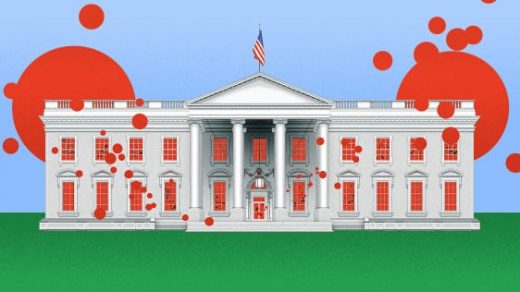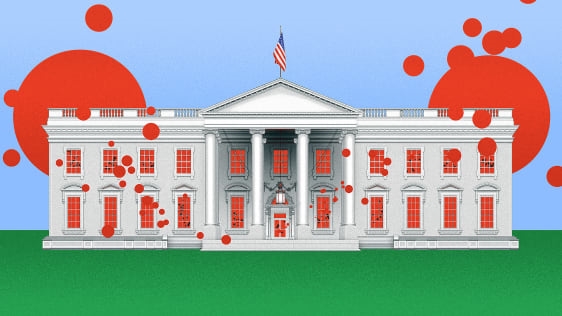The Trumps’ separate bedrooms could increase White House COVID-19 risk
In President Donald Trump’s early morning Twitter post on Friday announcing that he and First Lady Melania Trump had tested positive for COVID-19, he said that their quarantine and recovery process would begin immediately. “We will get through this TOGETHER!” he wrote.
But TOGETHER in this case means in separate bedrooms, on separate floors, and in opposite corners of their residence in the White House.
The president and first lady are known to occupy separate sections of the White House, which could complicate the already challenging task of quarantining them. The president resides on the second floor of the White House, the traditional home of the First Family. The main bedroom sits near the southwest corner of the building, with an attached bathroom and dressing room on the corner. According to the 2019 book Melania, Free: The Unauthorized Biography by Kate Bennett, the first lady resides apart from the president, on the third floor, with a suite of rooms in the northeast corner.
Trump has been downplaying the severity of the virus and pandemic, and has resisted wearing a mask in many circumstances. At age 74 and clinically obese, Trump faces a higher risk of hospitalization or death from the virus. Though Melania Trump is 50 and in visibly better shape than the president, COVID-19 has been found to sicken and kill even nominally healthy people. According to a memo from the president’s physician, both Trumps “plan to remain at home within the White House during their convalescence.” Questions to the White House about quarantine procedures were not answered by press time.
Their physical separation and the complex inner workings of the White House and its staff likely means that operations inside the building will have to be dramatically altered to keep the president and the first lady from infecting others.
More than 400 people work in the White House, according to the Trump Administration’s 2020 personnel report to congress, though this includes those working in the east and west wings that attach to the main 55,000 square foot building. Because the virus is mostly transmitted through the air, ventilation will be a concern in a building that is largely dependent on air-conditioning systems for air flow. The HVAC system there runs 24 hours a day, but is at least relatively new. It was last replaced in 2017, when the previous system, more than 27 years old, was removed.
The sheer number of people in the building may be the bigger concern. First Lady Melania Trump has a personal staff of 11, and the president himself undoubtedly interacts with a far larger number on a daily basis. Separate Secret Service details as well as the roughly 100 cleaning, cooking, and household staff only add to the numbers of people required to serve the president and first lady. More people moving through a larger area of a busy workplace and residence only increases the risk of exposure.
These groups of people coming into potentially close contact with the infected Trumps and each other could lead to the virus spreading even farther through the White House ranks. In previous months, several staff members of the White House, the press secretary of Vice President Mike Pence, and members of the Secret Service have contracted the virus.
With COVID-19 now literally living in the building and two separate quarantines in two different parts of the White House requiring presidential-level service and security, it may be only a matter of time before the infection spreads from the Trumps to those working in their home on their behalf.
(19)



